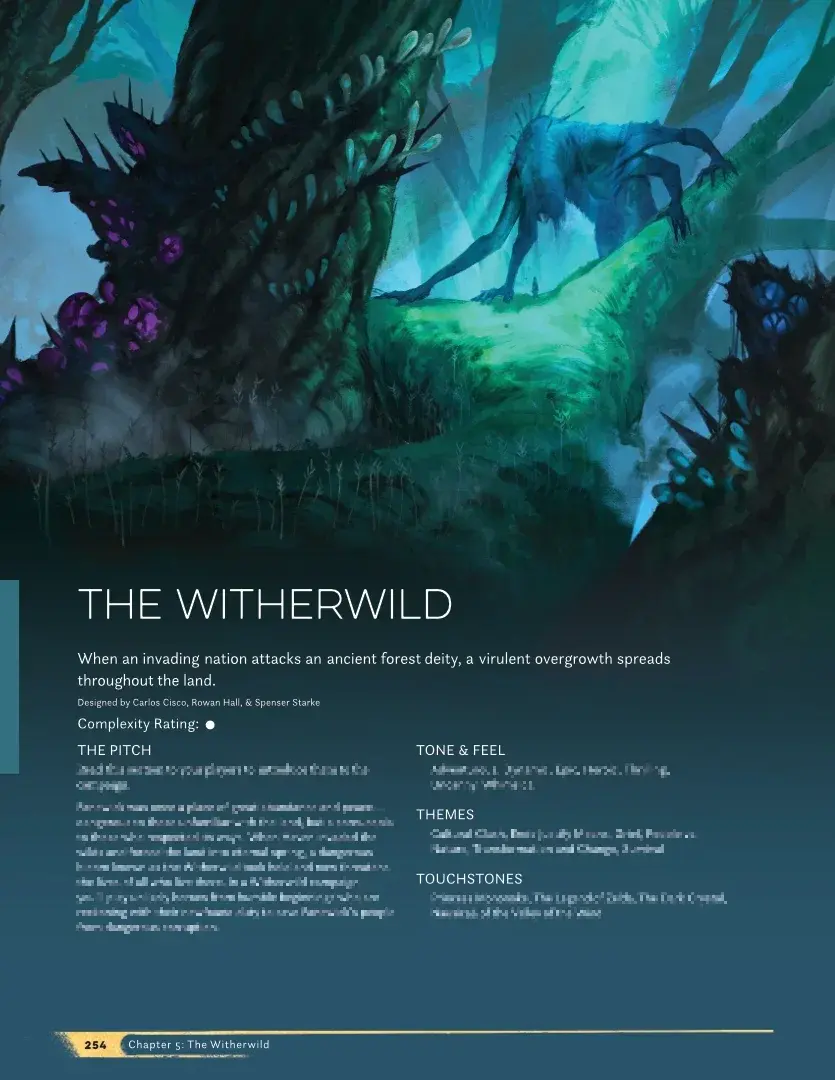Practice and Research - Exercise 3.1: Working with a House Style
- Dan Woodward

- Nov 2
- 2 min read
Introduction
Each of the Campaign Frames in the Daggerheart rulebook follows a specific structure [1]. This would give me guidance on how to structure my own frame and a consistent approach to break down and understand the visual language.

Researching the House Style
I had the rulebook in both printed and electronic formats, so I was able to take a good look at the structure of the campaign frame chapter. The font page (example above) had a different style from the other body pages, but from what I could see, there was a consistent use of columns and typography.
The margins were consistent, with the side facing the spine having more space to account for binding. The fonts had been referenced in the electronic document, rather than being embedded or saved as vector curves. This meant that a simple extraction would not work. Some of the fonts were commercial, and others were native to the Apple operating system. I spent time researching all of the fonts used and then finding alternatives that had a free license. For the most part, there were versions of many of the fonts used with a limited free license. For those without a direct option, I used online comparison tools to find other free fonts that had similar typographic elements.
The page numbers were integral to an embedded image, which was included in the electronic document. As I was intending to use this document (in its current format) with a personal group, using this image would not contravene Darrington Press's Community Gaming License. If I want to publish the finished campaign frame to the world (commercially or not), I would need to remove any images that they created directly.
My intention with this project was to practice working to a 'House Style', to show prospective clients how my work could fit seamlessly with theirs, so I kept the footer image.
I assumed they had created the book using Adobe InDesign. It was an interesting exercise to dissect the electronic document and discern what their general layout settings may have been. They don't all necessarily translate directly to a PDF, so reverse engineering things to match the original (as well as fit within the constraints of my own Affinity program) was an enlightening and incredibly useful endeavour.
By the end of this combined research and exercise, I had a base document that I could start to add my own content.
References
Darrington Press, (2025). Homebrew Kit - Daggerheart. [online] Daggerheart. Available at: https://www.daggerheart.com/homebrewkit/ [Accessed 2 Nov. 2025].






Comments